Angular vs React: What to Use for Web Development in 2026
May 25, 2025•14 min read

I hope you enjoy reading this post. If you want us to do your frontend development or design, click here.
Author: Alex Vasylenko | Founder of The Frontend Company

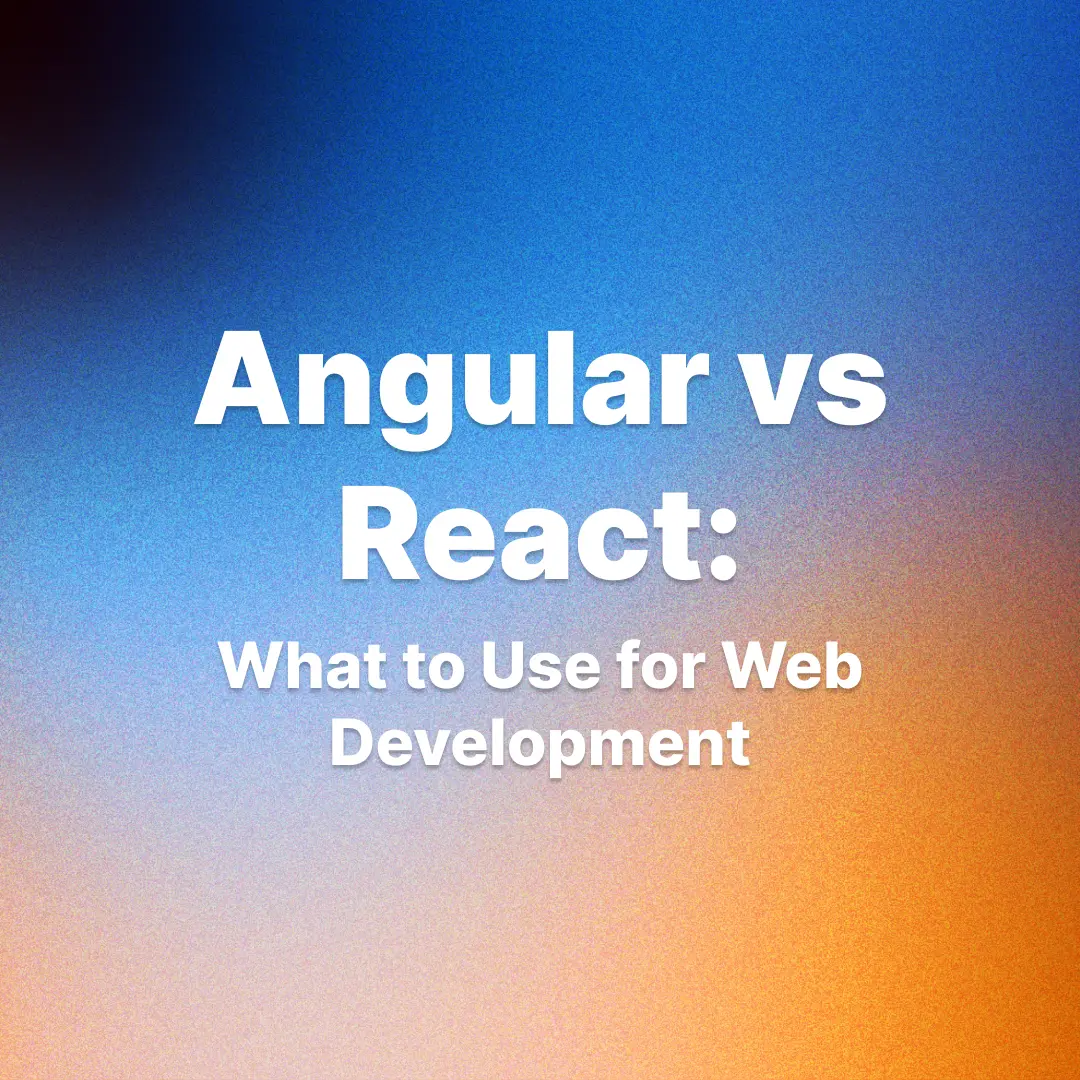
Hello everyone, today I want to talk with you about the most debated questions in frontend development: Angular or React? Which one should your team use to build your next app in 2026?
Personally, I have made a ton of projects using both technologies over the last few years and seen the good, the bad, and the overly rigid choices that can sometimes push you back.
In this article, I'll break down their core differences, highlight their pros and cons, and share my personal experience on when to use one over the other.
In my opinion, choosing between Angular and React is something like choosing between Ronaldo and Messi or choosing between Mercedes and BMW.
You don't need to love or hate them. You must enjoy it, depending on what kind of ride you're looking for.
So, let's dive in and check how Angular and React stack up.
What is React?
React is a JavaScript library created by Facebook in 2013 for building user interfaces. The core idea behind React was to simplify the creation of interactive UIs by breaking the UI into reusable components and using a virtual DOM for fast rendering.
In practice, React gives developers freedom: you can choose libraries for routing, state management, etc.
React's philosophy is minimal structure – you craft your own architecture.
For a brilliant experience with UI/UX, you can get the best help from ReactJS development services.
Key Features of React:
Component-Based Architecture. You build your UI like Lego blocks — one component at a time.
Virtual DOM. Efficient updates and smoother user experiences — especially in dynamic interfaces.
JSX (JavaScript XML). JSX lets devs write HTML-like syntax inside JavaScript, blending markup and logic in a single place.
Unidirectional Data Flow. React enforces a one-way data flow: data flows from parent to child components through props.
Ecosystem & Flexibility. React gives you just the view layer, which means you're free to choose how to handle everything else: routing (React Router), state (Redux, Zustand, Recoil), forms, styling — it's your call.
What is Angular?
Angular is a comprehensive framework for building web applications created by Google.
⚠️Important: Don't confuse it with the old AngularJS from 2010 – Angular (2+) is a complete rewrite released in 2016.
Unlike React, Angular is a full-fledged MVC framework that comes with everything out of the box: a powerful templating system, built-in routing, state management solutions, form handling, HTTP client, dependency injection, and more. It's built in TypeScript, and Angular developers use TypeScript by default in their projects.
Angular's approach is much more structured – you have only one strict way to write code, enforced by the framework's conventions. But when developers learn how to do it, they have a complete, integrated platform for building large applications.
Angular handles a lot for you, using features like two-way data binding and a powerful CLI for scaffolding projects.
Key Features of Angular:
Full-Fledged Framework. There is no need to assemble your stack from scratch — Angular gives you the whole toolbox.
TypeScript-First Development. Angular is built entirely in TypeScript and encourages developers to use strict typing from day one.
Angular CLI (Command Line Interface). The Angular CLI automates repetitive tasks: generating components, services, and modules, and even running production builds or tests with a single command.
Two-Way Data Binding. Angular supports two-way data binding out of the box, making it easy to sync data between the model and the view.

Transform your UI for peak performance!
🔹
Unlock seamless, high-performance frontend solutions tailored to your business.
🔹
Get an interface that outshines competitors and delights your users.
Angular vs React. What is better?
Now that we've walked through a quick overview of both technologies, we can already see some of the key differences. But here's the thing: this isn't about one being better than the other.
If a developer or company tells you "React is bad" or "Angular is outdated" without asking about your goals, team, or product needs, that's not someone I'd trust for architectural advice.
The best developers can mix Angular and React depending on the client's needs. For example, a big enterprise app might mostly build on Angular, but it needs an isolated widget that has a complex org chart visualization.
I would make that part in React and embed it because it is easier and faster for that specific task. It works well, and the end user doesn't know the difference.
So, your goal when you choose between Angular and React is to understand which one aligns better with your specific project needs and organizational context. Let's jump into a detailed comparison where we will discuss the most essential parts of this decision-making process.
Popularity of React and Angular
As we see on the Google Trends graph below, React (blue line) is more popular than Angular (red line) globally. Since December 21, React's popularity has gained a tremendous advantage over Angular.
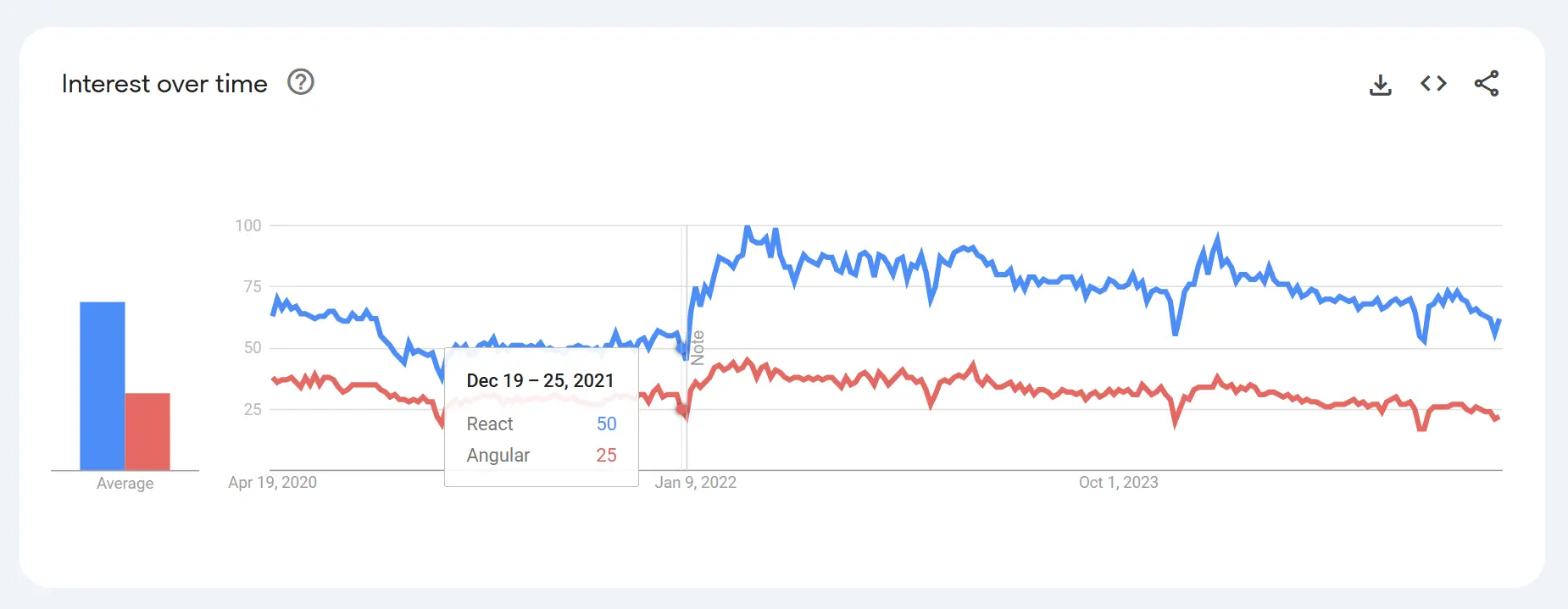
This reflects that React continues to be the "default" choice in many new projects, but Angular still shines in enterprise circles.
The main idea I want to tell you is that popularity should not be the deciding factor when you choose between React and Angular. At all!
One of the key reasons React is more popular than Angular is that most teams don't need a 10-ton truck to deliver a pizza.
The vast majority of apps are not enterprise-scale systems with hundreds of contributors and complex structures. They're products that need to move fast, iterate often, and be shipped yesterday. And React is perfect for this task.
For a better understanding, here are some more stats about React and Angular:
According to Stack Overflow's 2024 developer survey, 39.5% of professional developers use React vs 17.1% for Angular.
React has over 236k+ stars on GitHub, whereas Angular has around 97k+ stars.
Keep these stats in mind, and let's move on to the technical and practical differences that can truly influence your decision.
Angular vs React: Detailed Comparison
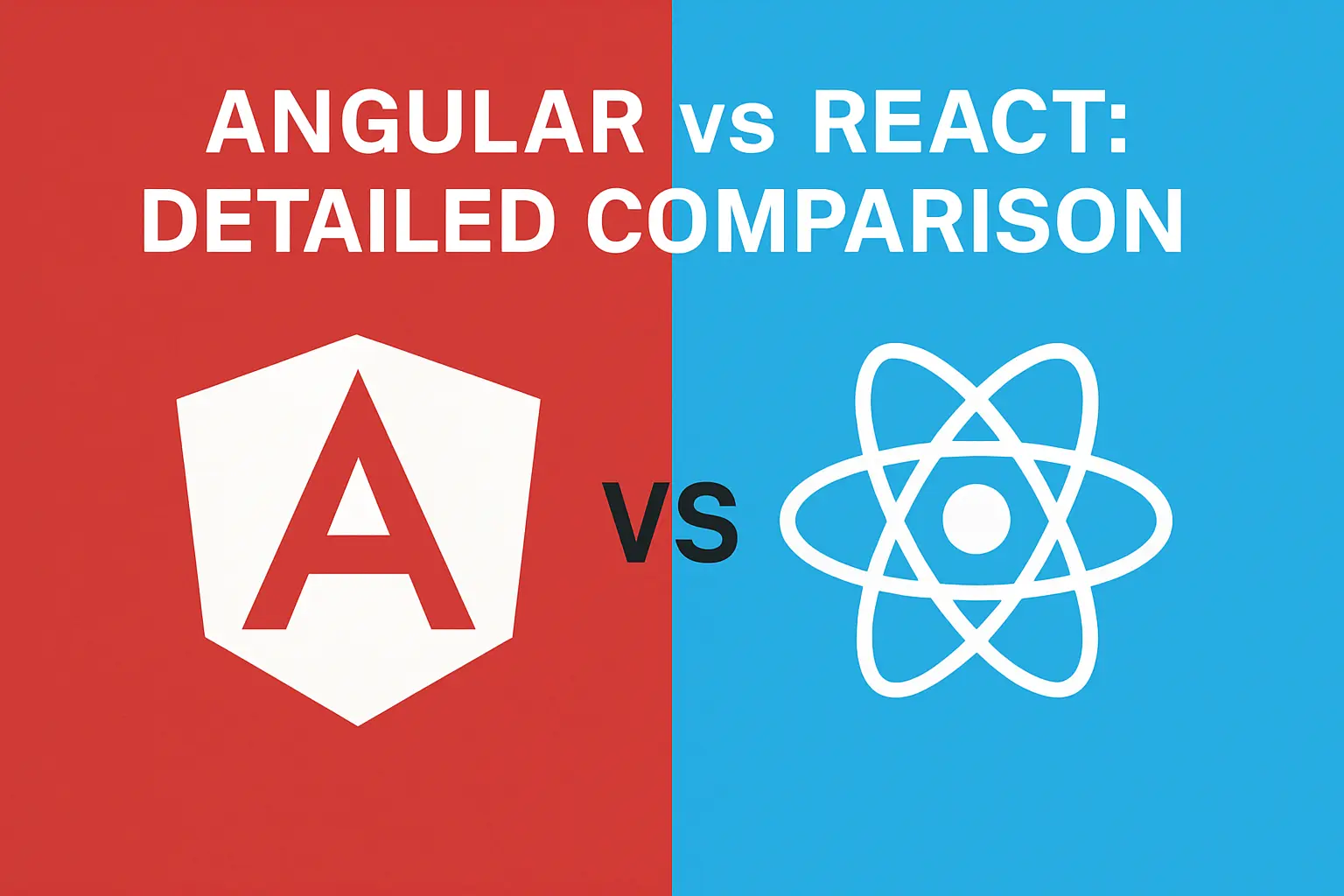
Let's look at all the crucial details one by one so you can make a decision based on the delicacy of your situation.
Architecture and Mindset
So, the first and fundamental difference between our heroes: React is a library, Angular is a framework. You've probably heard that a thousand times, but I want to explain what it means in practice.
With React, you can pick and mix your routing, state management, forms, styling, whatever. It's incredibly flexible — and that's exactly why so many developers love it.
But that flexibility comes with a cost. You risk that some of the tools you plug in can stop working or start conflicting with the rest of your setup. So, you will need to make extra decisions to fix it. That's the trade - you build it, you maintain it.
On the other side, Angular is a framework with a full ecosystem: routing, HTTP, forms, state, CLI — all official, all integrated, all supported by Google. But at the same time, it creates limits for developers in flexibility and doesn't allow them to stray from Angular because it is very structured. So, here you have instructions and limits, but zero risk.
This is important for decision-making because the choice in terms of architecture depends not only on your tasks but also on the work style you prefer.
React is about flexibility, problem fixing, and finding different solutions, while Angular rewards consistency, not improvisation.
Speed
The second big point is speed, which shows how each framework handles UI rendering and updates under the hood.
Angular made massive progress when it moved from AngularJS to Angular 2+. That rewrite was a game-changer not just in architecture but also in performance. (I actually covered this in more detail in our article: Is Angular Dead?).
If we compare React vs Angular in terms of speed, React is often perceived as faster for very dynamic interfaces due to the virtual DOM updates, which only re-render what actually changed.
But, honestly, Angular can absolutely match React's performance, but it requires some tuning.
Angular gives the tools to optimize, but developers have to know when and how to use them. It's unlikely the average user of your app will say, "This is in Angular. I can tell it's slower."
If you have specific performance requirements like rendering thousands of elements quickly, you can choose React, but otherwise, I would not make performance the sole deciding factor.
Developer productivity and maintainability usually have a bigger impact on your project's success than micro-performance differences that can often be optimized anyway.
Typescript
TypeScript is a statically-typed superset of JavaScript, which has become the standard for modern frontend development, and both Angular and React support it, but in very different ways.
Angular uses TypeScript by default. The official Angular documentation, all the example code, and practically every Angular project use TypeScript. It was developed by Microsoft and gives you strict rules on how to code something. So, if you choose Angular, you're also choosing TypeScript.
I can confirm from experience: on a big Angular project, TypeScript has prevented countless bugs – it's like having a helpful assistant reviewing your code as you write it.
React, on the other hand, is TypeScript-optional, and you can absolutely write React apps in plain JavaScript without any TypeScript. However, given TypeScript's popularity, many React teams adopt it for their projects. I would say the majority of professional React codebases at companies use TypeScript or are migrating to it because the benefits of catching mistakes and easing refactoring are so substantial.
In my company, The Frontend Company, we have a rule: all new React projects start with TypeScript enabled. Why? Because we experienced that once your project grows beyond a few components, the safety net of TypeScript pays off.
So the real question is: do you want a framework that mandates TypeScript (Angular) or a library where you have the choice (React)? There isn't a wrong answer, but know that in 2026, TypeScript skills will be common and very much worthwhile.
Templates and Component Structure
One of the more visible differences between Angular and React is how UI templates are written and structured within components.
React uses JSX, a syntax that lets you write HTML-like code directly inside your JavaScript. The upside of JSX is power and flexibility – it means developers don't have to learn a separate templating language – they just use JS.
In my view, JSX shines in that you only have one paradigm to think in and can do complex things without leaving your component file.
Angular, in contrast, uses HTML templates for its views. It means you can't put arbitrary JS logic here. You are limited to what Angular's template language allows (expressions and directives). Angular templates enforce a more precise separation between the view and the business logic in the component class.
The trade-off is that Angular's template syntax is another thing to learn. Some devs feel the need to know Angular's templating is a downside – "Angular templates don't look a lot like native HTML, which can result in denser code."
It's true that once developers sprinkle a template with many elements and bindings, it's not vanilla HTML anymore; it's Angular HTML.
But it's still declarative and separates the concerns: you won't have application logic in your template that resides in the TS class or a service.
In my team, some developers love JSX – they feel super productive writing markup with loops and conditions right there. Others prefer the clarity of Angular's split. It's somewhat subjective.
For an engineering leader, I'd consider the complexity of the UI your project needs. If you anticipate highly dynamic UIs with lots of conditional rendering, React's model might handle it more naturally since your team uses JavaScript logic freely. If your UI is more static or form-driven but large, Angular's templates provide structure and enforce a pattern that multiple developers can follow easily.
Teamwork and Scalability
When guiding a team of developers and planning a project's growth, the differences between Angular and React in how they facilitate collaboration and scalability are crucial.
React is very flexible. But with great flexibility comes great responsibility to establish internal coding guidelines and architecture rules.
In a small team of rockstar developers who communicate well, React's lack of structure is fine. They'll agree on patterns as they go. However, larger teams or fast-growing teams need to define some rules upfront for a React project: e.g., "We will use Redux for the global state" or "We will organize components into these folders, follow this naming convention, use hooks for logic, etc." If they don't, they risk each developer implementing things their own way.
One LinkedIn tech author noted that React's flexibility can lead to inconsistent coding practices "unless you set clear guidelines from the start." This is absolutely true.
Angular was practically made for large, multi-developer projects. The structure (modules, components, services) naturally encourages teams to split work: one dev can work on the Orders module while another works on the Payments module with minimal overlap, for example. Angular is a framework that sets boundaries, so it's harder to write worse code because of the enforced structure.
In my own experience, when we at The Frontend Company took on a large enterprise client project, we chose Angular specifically because we knew multiple teams across continents would be contributing. Angular's consistency means a developer in Bangalore and one in London can follow the same patterns, and the integration of their work will be smooth.
But it's not that you can't achieve collaboration with React – you can. It just relies more on team discipline than framework enforcement.
Ecosystem and Stability
One of React's greatest strengths is its massive ecosystem of libraries and tools. Because React focuses only on the UI layer, the community has built solutions for everything else – routing, state management, form handling, testing, build tooling, UI components, you name it.
This means that for a given problem, there are often multiple competing React libraries. For example, for state management, you have Redux, MobX, Zustand, Recoil, context API, etc. For forms, you have Formik, React Hook Form, etc. The benefit here is choice – you can pick libraries that best fit your needs or preferences.
It's often described that React is a library with an ecosystem that functions like a framework – you pick and choose pieces to form your own "framework."
The ecosystem around Angular is there, but smaller. Many third-party Angular libraries exist, but you may not need many because the framework covers common needs.
Angular gives you a more contained ecosystem with official solutions and a smaller community, which leads to consistency but less variety.
For long-term stability, both have strong backing – React from the Meta + community and Angular from the Google + enterprise community.
From a risk perspective, none of them is a risky choice in 2026. Both will be relevant in 5+ years. The real risk for team leaders is picking the wrong tool for their needs (e.g., struggling with Angular in a scenario where a lightweight library would do, or vice versa).
So, ecosystem and stability are solid for both, but React has the larger ecosystem.
Comparison Table
Feature | React | Angular |
|---|---|---|
Type | JavaScript library | Full-fledged framework (MVC) |
Created By | Meta (Facebook) | |
Language | JavaScript (TypeScript optional) | TypeScript (mandatory) |
Architecture | View layer only – choose your own stack | Integrated structure – everything included out of the box |
Flexibility | High – you choose routing, state, forms, etc. | Low – uses built-in Angular solutions |
Data Binding | One-way data binding | Two-way data binding |
Ecosystem | Massive community, many third-party tools | Smaller, but tightly integrated ecosystem |
Best For | Flexibility, speed, dynamic UIs, and startup velocity | Structure, enterprise apps, long-term maintainability |
Mobile Development | React Native | Uses Ionic or NativeScript (not officially part of Angular) |
Hiring Availability | Easier – large talent pool | Harder – more niche, but with strong TS & architectural experience |
React vs Angular: When to Choose What?
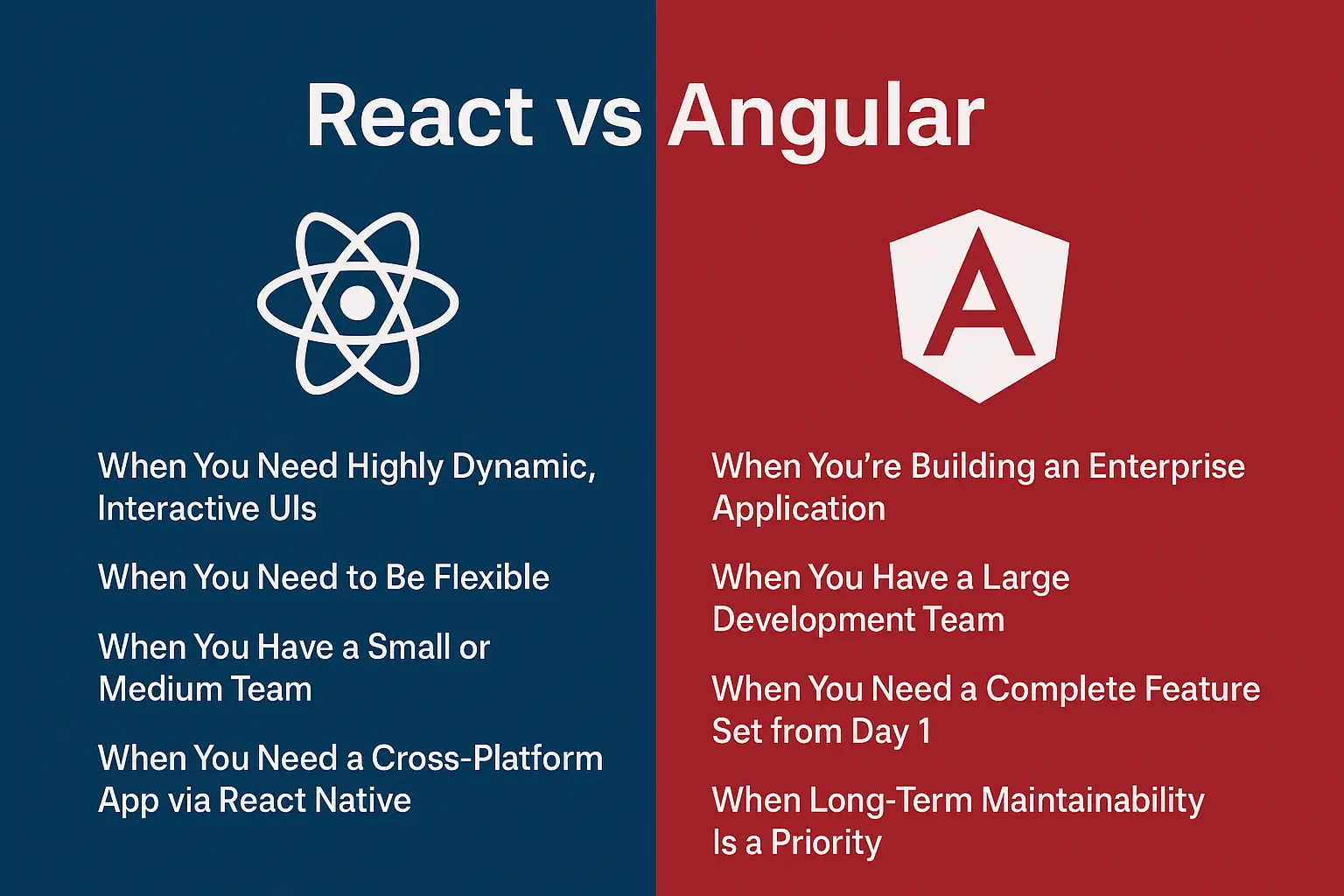
Now that we've explored the architecture, performance, and teamwork of React and Angular, you probably have a clearer picture of which one fits your needs.
To assist you even more, I will outline specific scenarios where React is the best choice, based on detailed comparison, user cases, and development patterns I've seen over the years.
Next, we'll do the same for Angular — so you will easily choose the right tool for your team.
When to Use React in 2026
Here are scenarios where React will be the best choice:
1. When You Need Highly Dynamic, Interactive UIs
If your application involves a lot of updates, frequent user interactions, or complex UI state changes, React is a strong choice. Its virtual DOM and one-way data flow shine in apps like dashboards, interactive data visualizations, social feeds, chat applications, etc.
For example, an application showing live stock prices or a live sports score dashboard would benefit from React's efficient re-rendering.
💼Case: I once led a project for a healthcare app that allowed doctors to manage patient data in real-time, including collaborative editing of records. We chose React, and it handled the frequent updates and concurrent interactions smoothly. The team leveraged React's ecosystem for real-time features with ease.
2. When You Need to Be Flexible
React is perfect when you want to craft your own stack or have very specific requirements that don't fit an out-of-the-box framework. You can integrate custom libraries and APIs or build something non-standard. React won't lock you in — it gives you complete control over architecture and tooling.
3. When You Have a Small or Medium Team
If you have a small team or a straightforward project, React will let you start running with minimal overhead.
Many MVPs start with React because you can build something functional fast, and there's plenty of community support if you get stuck.
Also, hiring for React is easier, given the larger pool of React developers.
4. When you Have Client-Heavy Applications
React is brilliant for apps that are frontend-heavy, where most of the logic is on the client side. It can be rich text editors or design tools in the browser.
5. When You Need a Cross-Platform App via React Native
If you plan to build both a web and a mobile app, React gives you a big advantage.
Developers can use React Native to build native iOS and Android apps using the same core concepts — components, props, and state.
Your team won't have to learn a completely new framework and can reuse some logic or structure across platforms. It makes React a smart choice for startups aiming to launch fast on both the web and mobile.
When to Use Angular in 2026
Here are scenarios where Angular will be the best choice:
1. When You're Building an Enterprise Application
Angular is amazing in enterprise environments or any situation where you're building complex applications with requirements, multiple modules, and long-term maintenance in mind. It can be applications like enterprise resource planning (ERP) systems, government portals, banking apps, and corporate intranets – big apps with many screens and forms, possibly developed by multiple teams.
💼CASE: We built an enterprise audit tracking system for a client with 50+ developers. Angular's modularity lets each department use a feature set without breaking others, and its structure helped new developers ramp up fast.
2. When You Have a Few Teams
If you have a large development team or multiple teams that need to collaborate on a single codebase, Angular is very advantageous. It is a top choice when you require a standardized development process across the team.
For example, in a project with 20+ developers, Angular's modules can be used to divide work, its strict typing catches interface mismatches between team A and team B's code, and its style gives a uniform look to the codebase.
3. When You Need a Complete Feature Set from Day 1
Sometimes you know from the start that you will need a lot of basic web app features – multiple pages with routing, lots of form inputs with validation, HTTP calls, internationalization, etc. Angular provides all these in an integrated manner.
For example, if your team is building a CRM system or a complex admin panel, they will have dozens of forms, nested navigation, and role-based content.
So, choose Angular when you need a complete package with all the built-in tools without integrating third-party libraries.
4. When Long-Term Maintainability Is a Priority
If your software has to live for many years and go through multiple cycles of developers, you must choose Angular.
With its structured updates, official tooling, and backward compatibility, you get confidence that your codebase won't rot.
Don't Know Which Frontend Technology to Choose?
React vs Angular — Make the Right Choice
To conclude, choose React when your priority is flexibility, a quick start, and leveraging a vast community for a dynamic UI, and choose Angular when your priority is a complete, structured solution that scales across large applications and teams.
You can't make the wrong choice, but one will likely make your path smoother than the other.
As a developer and founder who has lived through both Angular and React projects, my final advice is to be deliberate and pragmatic in your choice. Consider the factors we discussed: project size, team, performance needs, maintainability, etc. Use those to guide your decision. If you do that, you're unlikely to regret the choice because it will be grounded in reason.
Choose wisely, and your team will thank you as your project sails smoothly to success!
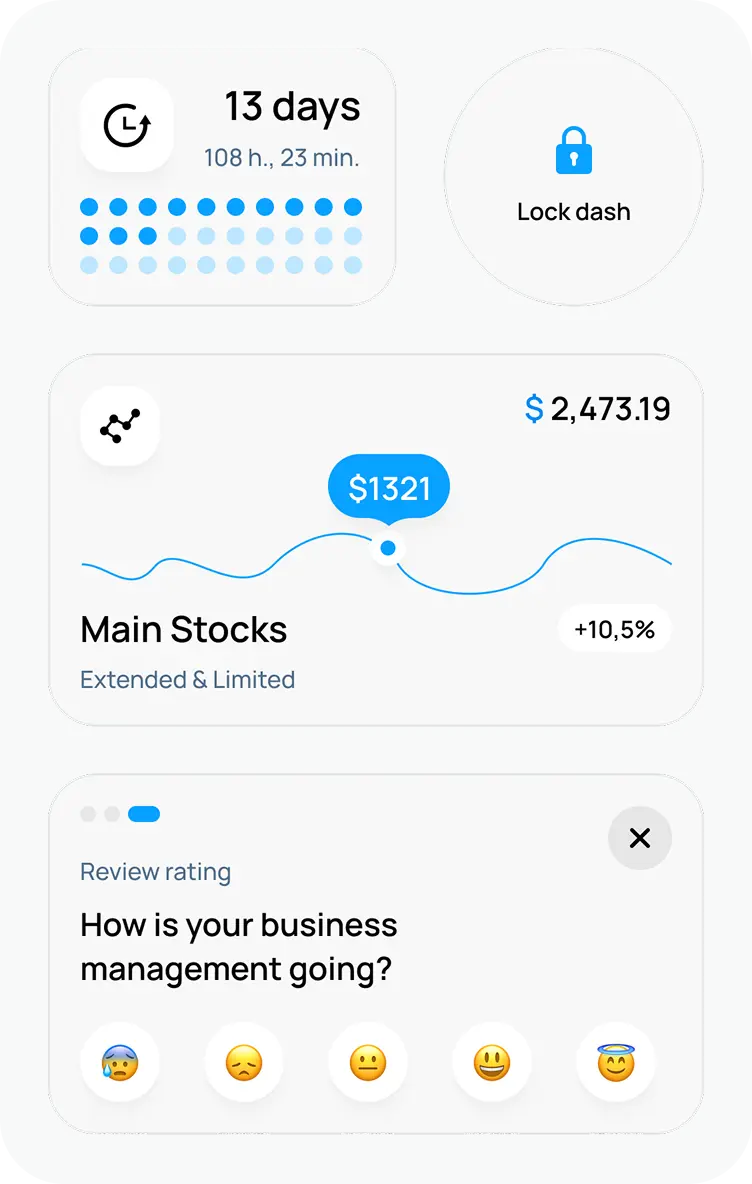
Unlock the full potential of your product

Boost customer retention & satisfaction

Become more competitive on the market

Move to the latest technologies stacks

Improve usability & visual appeal
FAQ

Alex Vasylenko is the founder of The Frontend Company, DBC and several other successful startups. A dynamic tech entrepreneur, he began his career as a frontend developer at Deloitte and Scandinavia's largest banking company. In 2023, Alex was honored as one of 'Top 10 Emerging Entrepreneurs' by USA Today.
RATE
Rate this article please
This will help us provide more useful information.
1293 ratings, average 4.95 out of 5
